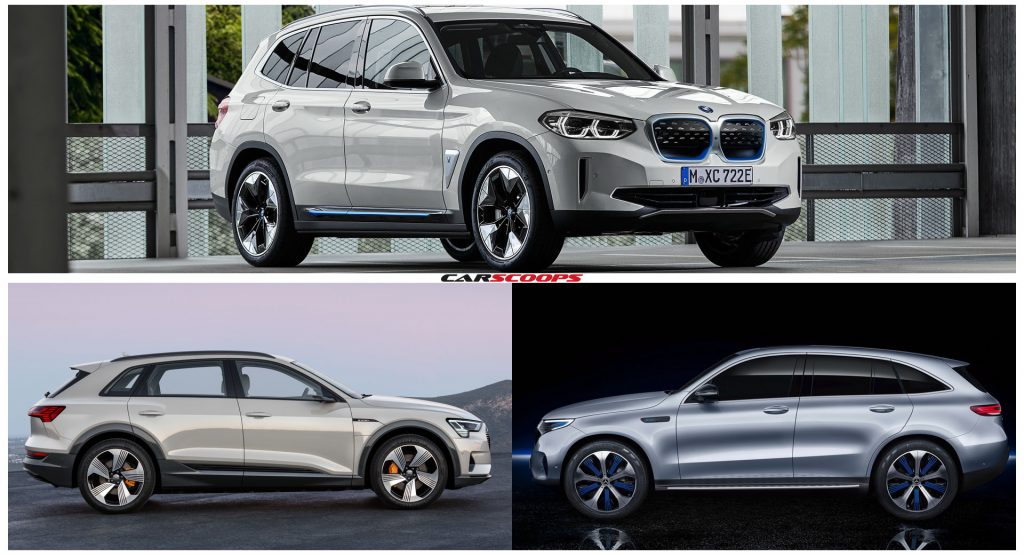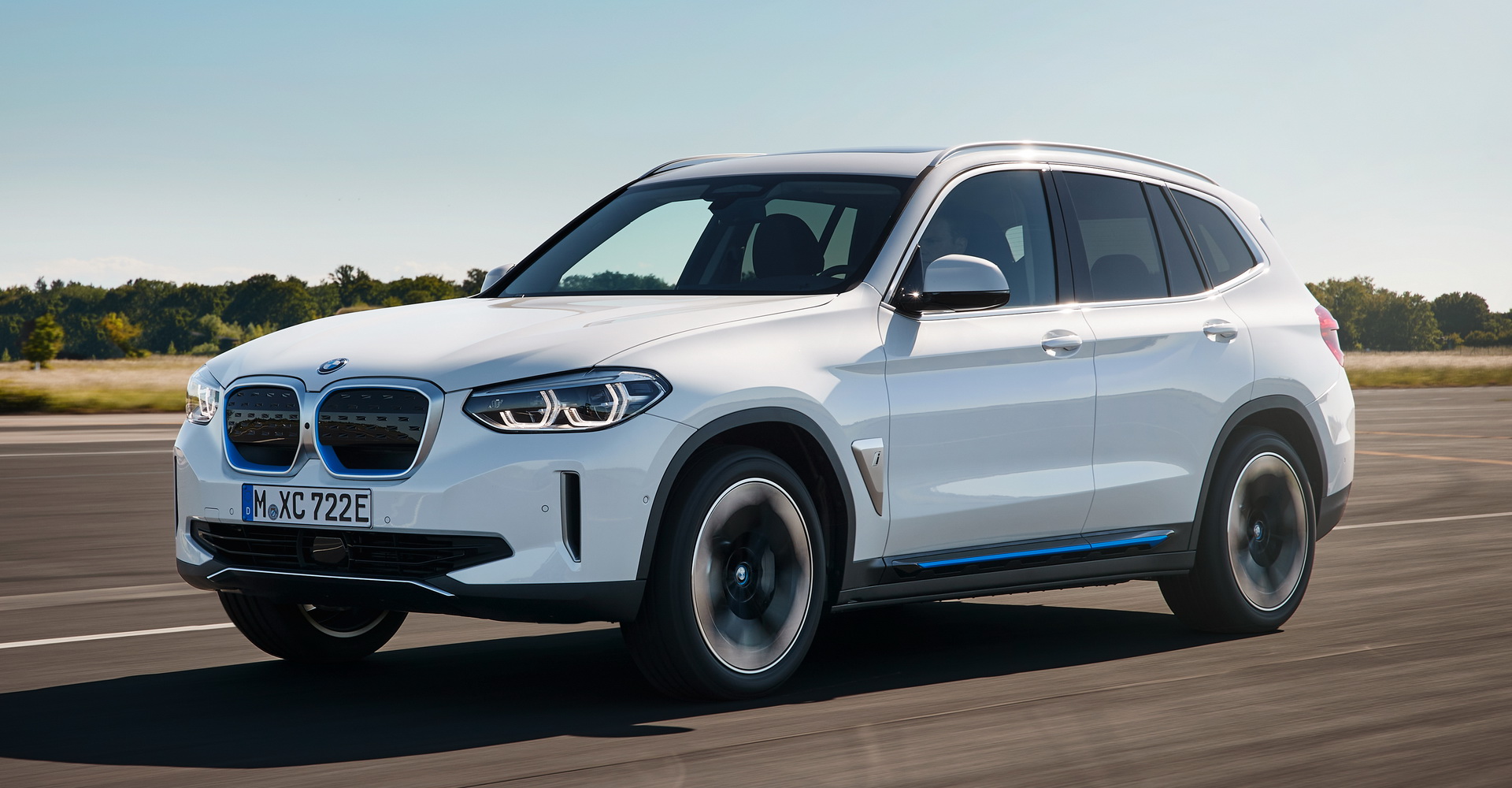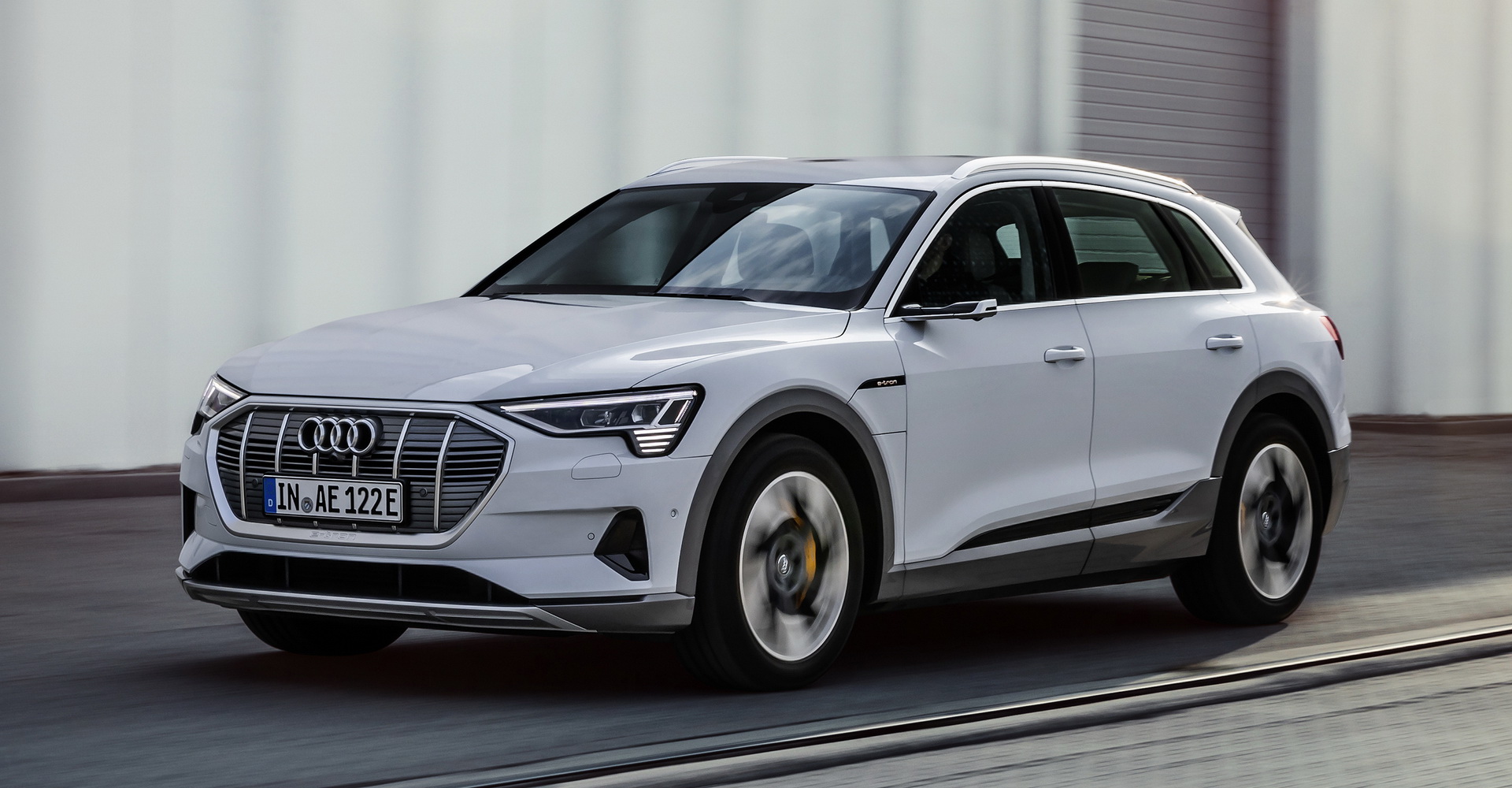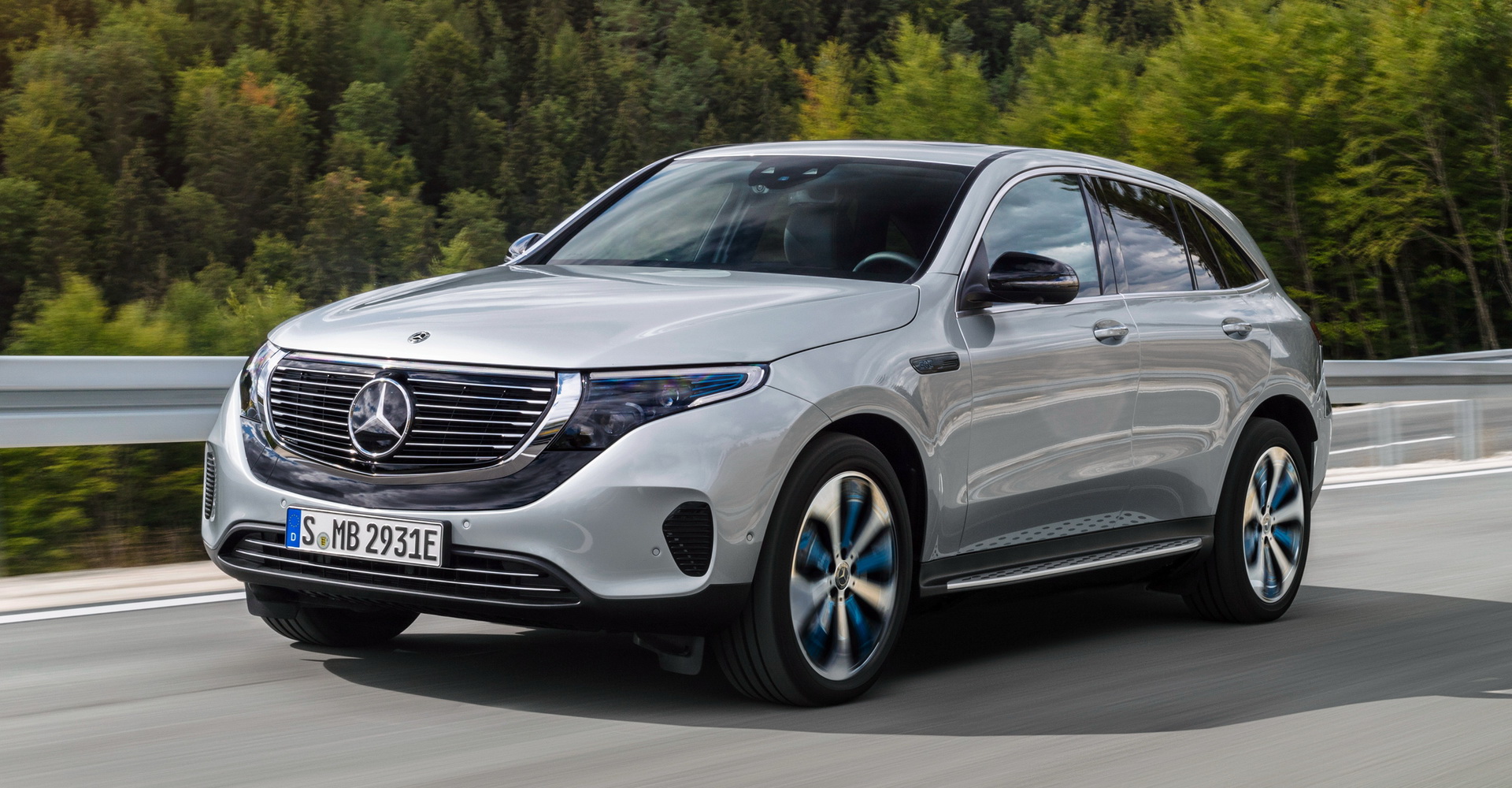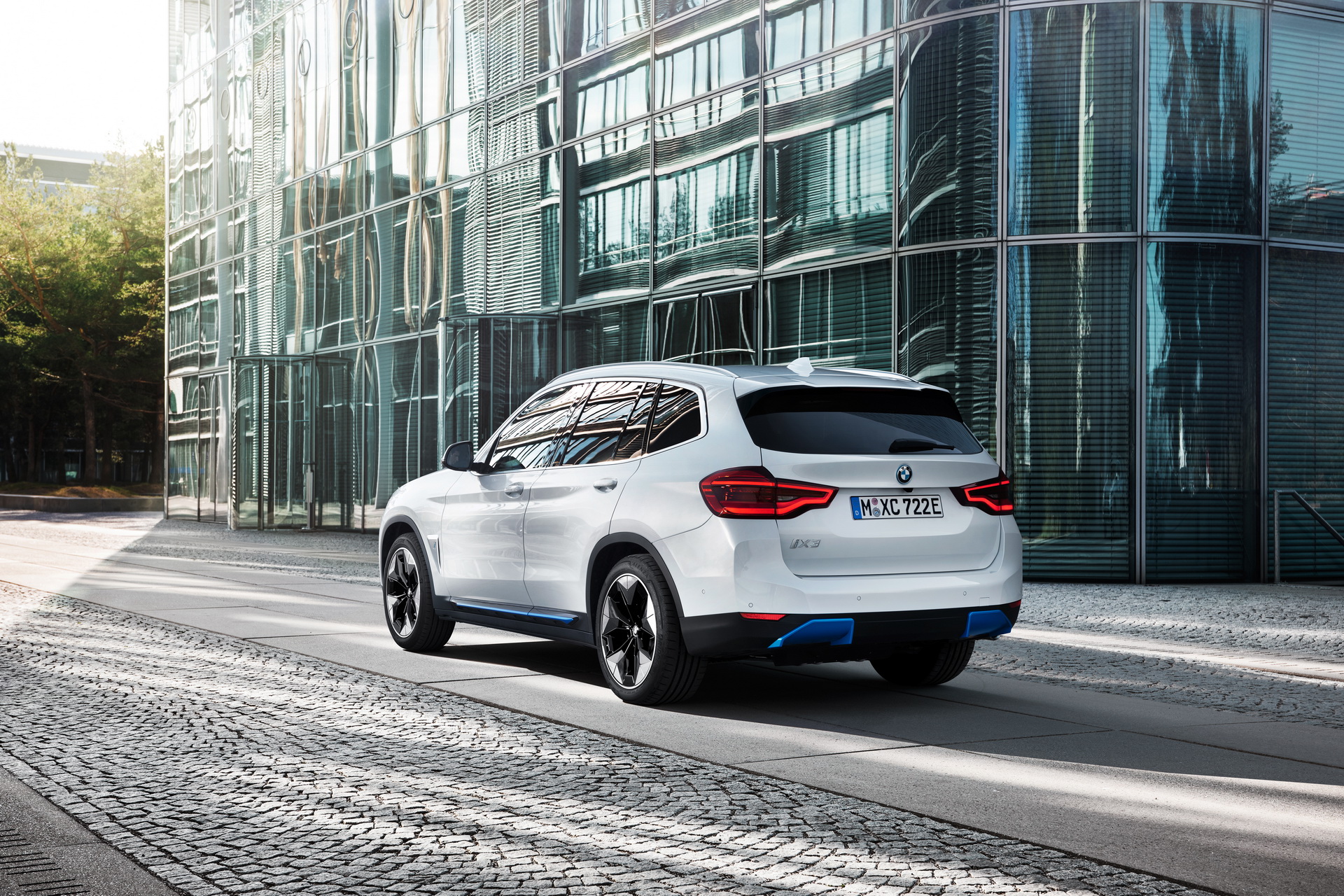With BMW having just unveiled theiriX3 crossover, we now have fully electric premium compact SUVs courtesy of Bavaria, Stuttgart and Ingolstadt.
Sure, there are more options out there, like the Tesla Model Y (borderline premium) or the Jaguar I-PACE, but right now, it just feels right for the iX3 to get labeled as either a winner or loser while being compared exclusively to its direct rivals from Audi and Mercedes.
We should note that while all three models are similar in terms of dimensions and, as far as the EQC and e-tron go, price too, they’re actually a little different in terms of power outputs, number of variants and range.
BMW iX3 (price TBA)
First things first: BMW will not be bringing the iX3 to North America, which is a real shame seen as how you can get an e-tron or an EQC in the U.S.
So what’s the first thing you notice about the iX3? Well, that would be the fact that it pretty much looks like a regular X3. Out of the three, it “screams” electric vehicle the least, with the Audi e-tron arguably falling in the exact opposite category.
Read Also: Driven – Mercedes EQC 400 Is A Strong Presence In The EV Crossover Segment
Its drivetrain consists of an 80 kWh battery pack and an electric motor with 282 HP and 295 lb-ft (400 Nm) of torque. Everything goes to the rear wheels exclusively, and you end up hitting 60 mph in 6.8 seconds. In other words, this should be a noticeably slower vehicle than its competitors. Thankfully you do get 285 miles (460 km) of range on a full charge per the WLTP, which is better than anything the EQC or e-tron can muster.
As for charging, you only need to keep the iX3 plugged in for 34 minutes to go from zero to 80% when using a 150 kW fast-charger. This is a best case scenario though.
Audi e-tron ($74,800)
Audi’s e-tron lineup is a great deal more diverse than that of any of its rivals. Not only do you have Sportback versions of this crossover, but you also have different drivetrain configurations (e-tron 50, e-tron 55, e-tron S).
In the U.S. the range starts from $74,800, which will land you the 55 variant (the only one available at the moment). Power comes from a pair of electric motors and a 95 kWh battery pack, combining for 402 HP. In a straight line, you’ll hit 60 mph in 5.5 seconds, which is quicker than you would in the less powerful BMW iX3, but slower than the equally-powerful Mercedes EQC.
Meanwhile, the entry-level e-tron 50 model with its 308 HP will dart towards 60 mph in 7 seconds flat, about the same as the BMW, while the e-tron S needs just 4.5 seconds thanks to its 496 HP drivetrain.
As for its range, if you have access to a 150 kW fast charger, you can top up your e-tron to 80% capacity in just 30 minutes. As per WLTP standards, you can drive your e-tron for 248 miles (400 km), although its EPA estimated range is just 204 miles (328 km).
Mercedes EQC ($67,900)
The Mercedes EQC is only available in EQC 400 spec right now, with a starting MSRP of $67,900. That’s actually not a bad price considering how it’s cheaper than the e-tron 55, as well as faster, and comes with a higher range.
Power comes via two electric motors and an 80 kWh battery pack, combining for 402 HP and a 0-60 time of 4.8 seconds. Its EPA-estimated range is 220 miles (354 km), and you can get an 80% charge in roughly 40 minutes from a 110 kW fast charger.
It kind of seems as though the Mercedes offers better value than the Audi with similar specs, while the BMW iX3 isn’t much of a match in terms of straight line performance.
With all things being equal, or if you live in a market where BMW will sell the iX3 (Europe, China), which of these three fully electric crossovers would you spend your money on?



